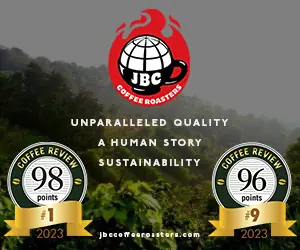Courtesy of Kenneth Davids, 21st Century Coffee: A Guide
If someone would have asked me 15 years ago where I expected the first Napa Valley of coffee to develop, I would not have guessed the slopes of Volcán Baru in far western Panama. I would have guessed Kona, or the Antigua Valley of Guatemala, or perhaps central Costa Rica.
But there it is: Panama, where some of the most sophisticated farms in the world increasingly grow the most distinctive varieties/ cultivars of Arabica, processing them by the most refined experimental methods, near a small city (David) with an array of fine restaurants and boutiques.
Why Panama? Mainly, I think, because the growing region is compact and dominated by medium-sized, family-owned, artisan farms with well-traveled, technically sophisticated owners and managers who are solidly networked within the larger global community of high-end coffee. Panama is relatively politically stable with a well-developed infrastructure. It didn’t hurt that the now celebrated, game-changing cultivar Geisha/Gesha was first selected and exploited by one of those sophisticated farming families, the Price Peterson family.
The Traditional Panama Cup
The notion of associating cup characteristics with country is breaking down all over the coffee world, but the idea has become particularly dubious in Panama, where experiment is everywhere. Nevertheless, there is a traditional Panama cup, and a very fine one, on the occasions when it still emerges from the pack of Geishas and processing experiments.
Typical Global Descriptors (non-Geishas, traditionally wet processed).
Clean, softly but crisply bright, balanced, gently fruit- and floral-toned.
Common Aroma/Flavor Notes.
Classic wet-processed Panamas express the typical range of aroma and flavor notes characteristic of fine Latin America wet-processed coffees: nut, aromatic wood, stone fruit, some ripe citrus, flowers. In the case of lots produced mainly from the Bourbon variety, sweetly tart, dry berry notes often make themselves felt.
The Geisha/Gesha cup.
Intense but balanced structure, with acidity ranging from deeply resonant to brightly juicy. Aroma and flavor in a true Panama Geisha from more-or-less mature trees is always grand and intricate, invariably with complex, explicit flowers, usually fragrant aromatic wood (sandalwood often) and always a crisp cocoa. Citrus may range from bitterish bergamot to lush tangerine; stone fruit from apricot to mango.
In other words, there is always a whole lot going on. Lesser Geishas (the beans are usually smaller and more conventionally shaped; trees may be younger, terroirs perhaps not quite right, genetics among the trees may be drifting) show suggestions of all of that, but less intensely or explicitly.
Geishas and Processing.
Wet processing tends to intensify the Geisha flowers and citrus and produce a brighter, more articulated profile overall. Dry or natural processing emphasizes the lush side of the fruit and flowers, may deepen the cocoa to dark chocolate, sandalwood to cedar, and add a heady hint of spirits. Additional, often extreme variations in Geisha profile may be created by newer experimental processing methods like variations of anaerobic ferment. Good Geishas are such a high-value crop to start with that the significant cost of small-volume processing experiments may be justified by even higher prices per pound and potentially higher ratings in green coffee competitions.
Panama Varieties
Traditional Varieties.
Caturra, Typica, Bourbon.
Non-Traditional Varieties.
Geisha. Geisha. Geisha. The celebrated variety (also spelled Gesha in regions outside Panama), with its large, boat-shaped beans and intense, flamboyant aromatic profile, was discovered, or rediscovered, in Panama. It has been traced back through Costa Rica to Tanzania and Kenya and from there to the cradle of the Arabica species, western Ethiopia. Various cultivars of Geisha are being identified and isolated in Panama, including green-tip and bronze-tip varieties.
Panama Processing Methods
Traditional Methods.
Classic ferment-and-wash wet method.
Newer Non-Traditional Methods.
Panama has become a hotbed of experiment with processing. Many fine lots of Panama coffee, both from traditional varieties as well as from Geisha, are processed by sophisticated versions of the dried-in-the-fruit, natural method. Occasional lots processed by the honey method also appear. More exotic processing methods are coming into vogue, including variations that initiate ferment in the whole fruit, often involving a limited-oxygen or anaerobic stage.
Panama Growing Regions
Three major growing regions cluster near Volcán Barú, Panama’s tallest mountain. The two best-known are Boquete (east and southeast of Volcán Barú) and Volcán (west and southwest).
Panama Coffee Ratings and Reviews
Click here to view ratings and reviews of coffees from Panama.










